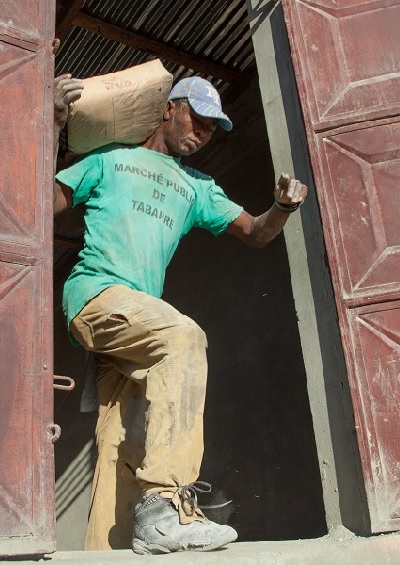Haiti: Rebuilding the Right Way
After the devastating earthquake in 2011, one Haitian civil engineer took it upon herself to rebuild Haiti the right way.
September 20, 2015

Felipe Jácome is a documentary photographer born in Ecuador. Since completing his education, his work has focused on issues of human mobility ?and human rights. In 2010, he won the International Committee of the Red Cross Young Reporter competition. His photos have appeared in publications such as Foreign Policy, The Guardian, and The Miami Herald.
His piece “The Vertical Border” about human rights violations of migrants in Mexico was shown at?the 50th annual General Meeting of amnesty international in San Francisco. His work has also been exhibited in London, Geneva, Amsterdam, Quito and Washington DC.
Myrtha Joseph Baptiste launched her concrete block-making company, Bel Kay, in 2011, the year after the Haitian capital Port-au-Prince was devastated by an earthquake that left more than 100,000 people dead.
Like many other people in the city, she was horrified that one of the main reasons why 250,000 buildings had collapsed was the poor quality of construction materials. A civil engineer in her late 40s, her firm – whose name means “nice house” in Haitian Creole – now employs a dozen workers making high-quality blocks.
Text and photographs by Felipe Jácome
A worker at Myrtha’s company.
 Felipe Jácome is a documentary photographer born in Ecuador. Since completing his education, his work has focused on issues of human mobility ?and human rights. In 2010, he won the International Committee of the Red Cross Young Reporter competition. His photos have appeared in publications such as Foreign Policy, The Guardian, and The Miami Herald. His piece “The Vertical Border” about human rights violations of migrants in Mexico was shown at?the 50th annual General Meeting of amnesty international in San Francisco. His work has also been exhibited in London, Geneva, Amsterdam, Quito and Washington DC.
Felipe Jácome is a documentary photographer born in Ecuador. Since completing his education, his work has focused on issues of human mobility ?and human rights. In 2010, he won the International Committee of the Red Cross Young Reporter competition. His photos have appeared in publications such as Foreign Policy, The Guardian, and The Miami Herald. His piece “The Vertical Border” about human rights violations of migrants in Mexico was shown at?the 50th annual General Meeting of amnesty international in San Francisco. His work has also been exhibited in London, Geneva, Amsterdam, Quito and Washington DC.The Other Hundred is a unique photo-book project aimed telling the stories of people around the world who are not rich but who deserve to be celebrated.
The Other Hundred Entrepreneurs: 100 Faces, Places, Stories — the second volume in The Other Hundred series — focuses on the world’s everyday entrepreneurs. It captures the reality that small and medium-sized businesses, rather than tech billionaires or elite MBAs, contribute the majority of the world’s jobs, including half of all jobs in Africa and two-thirds in Asia.
The book offers an alternative to the view that most successful entrepreneurs were trained at elite business schools. Here are people who have never written a formal business plan, hired an investment bank, planned an exit strategy or dreamt of a stock market floatation. Some work for themselves, others employ a few people, still others a few hundred.
 The book’s 100 stories were chosen from a pool of 10,000 images shot in nearly 150 countries. The book is published by Oneworld Publications in London and is available in bookstores worldwide and online.
The book’s 100 stories were chosen from a pool of 10,000 images shot in nearly 150 countries. The book is published by Oneworld Publications in London and is available in bookstores worldwide and online.




